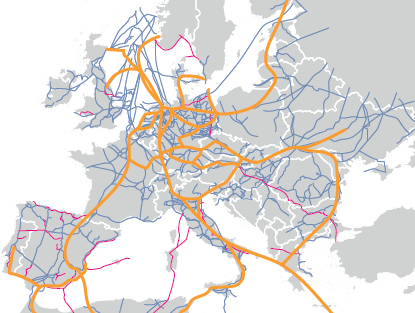The International Association Cedigaz has just released its report “GERMANY National Hydrogen Strategy: Germany aims for leadership in green hydrogen technologies”, which assesses developments and prospects for green hydrogen in Germany and some potential supplying countries.
Report’s key highlights
- The German federal government adopted its National Hydrogen Strategy (NWS) in June 2020, which is seen as a pivotal element for Germany to be climate neutral by 2050. The German government considers that only hydrogen produced on the basis of renewable energies is sustainable in the long term.
- Germany’s vast natural gas infrastructure is part of the National Hydrogen Strategy (NWS) from the outset as existing assets can be converted to hydrogen requiring the construction of fewer new projects. Germany will play a crucial role in terms of hydrogen transport and storage infrastructure. The country has the largest storage capacity in salt caverns in Europe.
- Since 2013, hydrogen blending (up to 10%) at the distribution level has been assessed in Germany. Ongoing projects will test 20% blending. At the transmission level, the TSOs have taken the basic approach of developing a separate infrastructure for hydrogen transmission in pipeline networks, mostly based on converted existing gas pipelines.
- The government predicts that hydrogen demand could roughly double by 2030 and firstly aims to raise the uptake of green hydrogen in the industrial and transport sectors. There is a wide range of medium and long term forecasts and scenarios on hydrogen demand, depending on different assumptions.
- Going forward, Germany wants to make green hydrogen competitive by pushing cost reductions. Germany is a front-runner in the electrolysis market, which is on an exponential growth path. The measures included in the NWS will give a further boost to the sector.
- Green hydrogen will play a key role to compensate for the intermittence of renewable energies and provide long-term energy storage services needed by a renewables-heavy grid.
- As potential hydrogen demand far exceeds the potential domestic production, Germany is set to become a large importing country of sustainably produced hydrogen or derived products. Several potential exporting countries are being assessed to supply hydrogen by pipe and by ship.
- With its central position in Europe and its role as a transit country, Germany is well placed to become a European hub for hydrogen. The government will coordinate its international ambitions to push the production and trade of hydrogen and its derived products globally.
- Currently, green hydrogen is more expensive than blue hydrogen. The market needs to scale up to reduce production costs, along with a continuation of the downward trend of renewable power costs. Huge investments in European and international transport chains are also necessary. These challenges can only be resolved in the EU internal market and legal framework.
Map 1: Germany in the European Transnational Hydrogen Backbone

Note: Natural gas infrastructure in Europe (blue and red lines) and first outline for a hydrogen backbone infrastructure (orange lines).
Source: Hydrogen Europe (2020)
For more information: contact@cedigaz.org
Cedigaz (International Center for Natural Gas Information) is an international association with members all over the world, created in 1961 by a group of international gas companies and IFP Energies nouvelles (IFPEN). Dedicated to natural gas information, CEDIGAZ collects and analyses worldwide economic information on natural gas, LNG, low-carbon gases and unconventional gas in an exhaustive and critical way.
